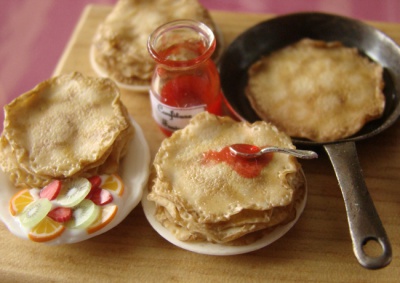 French "crêpes"
French "crêpes" Upside-Down Party!
In a 2013 survey by SNCF, Germans, Belgians and Italians chose the crêpes as the star of French cuisine. Either as a friendly dessert for the Candlemas or as a trendy dish served in a typical "brasserie", the crêpes can adapt to any audience. But beware, a "crêpe" is not an ordinary pancake.
Invulnerable glamour
What could be more typically French than a hot crêpe eaten on the spot in winter? Just enter a restaurant, and this street food gains a much posher lining with the famous "crêpe suzette", made with orange liquor. With its spectacular flaming, this recipe is part of symbols that tourists hold dear.
In the land of the krampouezh
In French Brittany, the crêpe is called "krampouezh" and it's not a local speciality, it's a culture! It is prepared with buckwheat flour and filled with a grilled sausage as a main dish, or with caramel with salted butter for dessert. Breton crêpes always go with a bowl of cider. In Paris, they have their own neighbourhood, in Montparnasse, a major hub of Breton culture for over a century.
The Day of the Oracle
France has no celebration day for its camembert or its baguette, but the crêpe has its own: February 2nd, the Candlemas day. This Christian holiday marks the end of winter and was used as an oracle day: as the saying goes, "sun in Candlemas is a promise of frost". Crêpes are traditionally cooked this day to symbolise the sun. If inappropriately flipped, it means a bad year of harvest and need to be thrown over a cupboard to counter the ill omen. As a proof that this superstition continues, the first crêpe to be cooked is often discarded, considered as failed!
An edible plate
Though France has managed to put the crêpe at the acme of finesse, this dish knows no boundaries. Each country has its own version of the crêpe: American pancakes, Russian blinis, Indian naans, but also Japanese dorayaki, Lebanese manouchis or Brazilian tapiocas, etc., those are only a few variations of the dish, which first historical proofs go back more than 7,000 years. This is well before bread, which is just another "raised" version of the crêpe.
